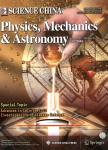版权所有:内蒙古大学图书馆 技术提供:维普资讯• 智图
内蒙古自治区呼和浩特市赛罕区大学西街235号 邮编: 010021

作者机构:Key Laboratory for Particle AstrophysicsInstitute of High Energy PhysicsChinese Academy of Sciences Institut für Astronomie und AstrophysikEberhard Karls Universität INAF-Istituto di Astrofisica e Planetologia Spaziali INFN-Roma Tor VergataVia della Ricerca Scientifica 1 Department of Engineering Physics and Center for AstrophysicsTsinghua University DTUBuilding 327DK-2800 Kongens Institute of Space Sciences08193 Cerdanyola del Valles Institut d’Estudis Espacials de Catalunya Sezione di PisaIstituto Nazionale di Fisica NucleareLargo Bruno Pontecorvo3 Department of AstronomyUniversity of Genevachemin d’Ecogia 16 Osservatorio di Astrofisica e Scienza Dello Spazio di BolognaIstituto Nazionale di Astofisica Astronomical InstituteCzech Academy of Sciences Max Planck Institute for Extraterrestrial PhysicsGiessenbachstr.1 CEA Paris-Saclay/IRFU Beijing Institute of Spacecraft System EngineeringCAST Osservatorio Astronomico di BreraIstituto Nazionale di Astofisica Space Research CenterPolish Academy of Sciences Key Laboratory of Advanced Material Microstructure of Education Ministry of ChinaInstitute of Precision Optical EngineeringSchool of Physics Science and EngineeringTongji University Department of Physics and Center for AstrophysicsTsinghua University Universita’degli Studi di UdineVia delle Scienze 206 Mullard Space Science LaboratoryUniversity College London Department of Nuclear and Particle PhysicsUniversity of Geneva SRON Netherlands Institute for Space Research Politecnico di Milano Sezione di PerugiaIstituto Nazionale di Fisica Nucleare Dipartimento di Fisica e Chimica Fondazione Bruno Kessler Dr.Karl Remeis-Observatory and Erlangen Centre for Astroparticle PhysicsUniversität Erlangen-Nürnberg University of PaviaDepartment of ElectronicsInformation and Biomedical Engineering and INFN Pavia Sezione di TorinoIstituto Nazionale di Fisica NucleareVia Pietro Giuria1 Department of Physics and AstronomyUniversity of Leicester Sezione di TriesteIstituto Nazionale di Fisica Nucleare TIFPAIstituto Nazionale di Fisica Nucleare State Key Laboratory of Transient Optics and PhotonicsXi’an Institute of Optics and Precision MechanicsChinese Academy of Sciences Anton Pannekoek Institute for AstronomyUniversity of Amsterdam Center for Precision EngineeringHarbin Institute of Technology School of Chemistry and Chemical EngineeringHarbin Institute of Technology State Key Laboratory of Advanced Welding and JoiningHarbin Institute of Technology Nicolaus Copernicus Astronomical CenterPolish Academy of Sciences
出 版 物:《Science China(Physics,Mechanics & Astronomy)》 (中国科学:物理学、力学、天文学(英文版))
年 卷 期:2019年第62卷第2期
页 面:3-27页
核心收录:
基 金:support of the Chinese Academy of Sciences through the Strategic Priority Research Program of the Chinese Academy of Sciences (Grant No. XDA15020100) support by ASI, under the dedicated eXTP agreements and agreement ASI-INAF (Grant No. 2017-14-H.O.) by INAF and INFN under project REDSOX support from the Deutsche Zentrum für Luft- und Raumfahrt, the German Aerospce Center (DLR) support of Science Centre (Grant No. 2013/10/M/ST9/00729) support from MINECO (Grant No. ESP2017-82674-R) and FEDER funds
主 题:X-ray instrumentation X-ray polarimetry X-ray timing space mission:eXTP
摘 要:In this paper we present the enhanced X-ray Timing and Polarimetry mission—eXTP. eXTP is a space science mission designed to study fundamental physics under extreme conditions of density, gravity and magnetism. The mission aims at determining the equation of state of matter at supra-nuclear density, measuring effects of QED, and understanding the dynamics of matter in strong-field gravity. In addition to investigating fundamental physics, eXTP will be a very powerful observatory for astrophysics that will provide observations of unprecedented quality on a variety of galactic and extragalactic objects. In particular, its wide field monitoring capabilities will be highly instrumental to detect the electro-magnetic counterparts of gravitational wave *** paper provides a detailed description of:(1) the technological and technical aspects, and the expected performance of the instruments of the scientific payload;(2) the elements and functions of the mission, from the spacecraft to the ground segment.